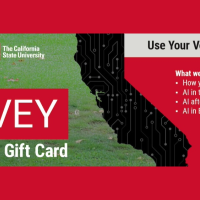Data Privacy: The Story of You
All your online activity generates a trail of data.
Websites, apps, and services collect data on your behaviors, interests, and purchases. Sometimes, this includes personal data, like your Social Security and driver’s license numbers. It can even include data about your physical self, like health data – think about how a smartwatch counts and records how many steps you take.
While it’s true that you cannot control how each byte of data about you and your family is shared and processed, you are not helpless! People can control how they share data with a few simple steps.
Here are some tips to help.
Know the Tradeoff Between Privacy and Convenience
Nowadays, when you download a new app, open a new online account, or join a new social media platform, you will often be asked to access your personal information before you can even use it. This data might include your geographic location, contacts, and photos. For these businesses, this personal information about you is of tremendous value. Think about if the service you get in return is worth the data you must hand over, even if the service is free. Consider all the details before sharing your data with businesses or services.
Some things to consider:
- Is the service, app, or game worth the personal data they want in return?
- Can you control your data privacy and still use the service?
- Is the data requested relevant to the service? For example, why would a solitaire game need access to all your contacts?
- If you haven’t used an app, service, or account in several months, is it worth keeping around knowing that it might be collecting and sharing your data?
Adjust Privacy Settings to Your Comfort Level
Check the privacy and security settings for every app, account, or device. These should be easy to find in the settings section and only take a few seconds to change. Set them to your comfort level regarding personal information sharing. Generally, we advise on the side of sharing fewer data, not more. You don’t have to do this for every account at once. Start small, and over time adjusting all your settings to your comfort will become a habit. The ITS Security team offers free resources, like our Manage Your Privacy Settings page, that allows you to check the settings of social media accounts, retail stores, apps, and more.
Protect Your Data
Data privacy and data security go hand-in-hand. Along with managing your privacy settings, follow some simple cybersecurity tips to keep it safe. We recommend following the Core 4:
- Create long (at least 12 characters) unique passwords for each account and device. Use a password manager to store each password – securely maintaining dozens of passwords is now easier than ever.
- Turn on multifactor authentication (MFA) wherever permitted. MFA keeps your data safe even if your password is compromised.
- Please turn on the automatic device, software, and browser updates, or make sure you install updates as soon as they are available.
- Learn how to identify phishing messages. Scammers utilize phishing attempts as emails, texts, or direct messages.


